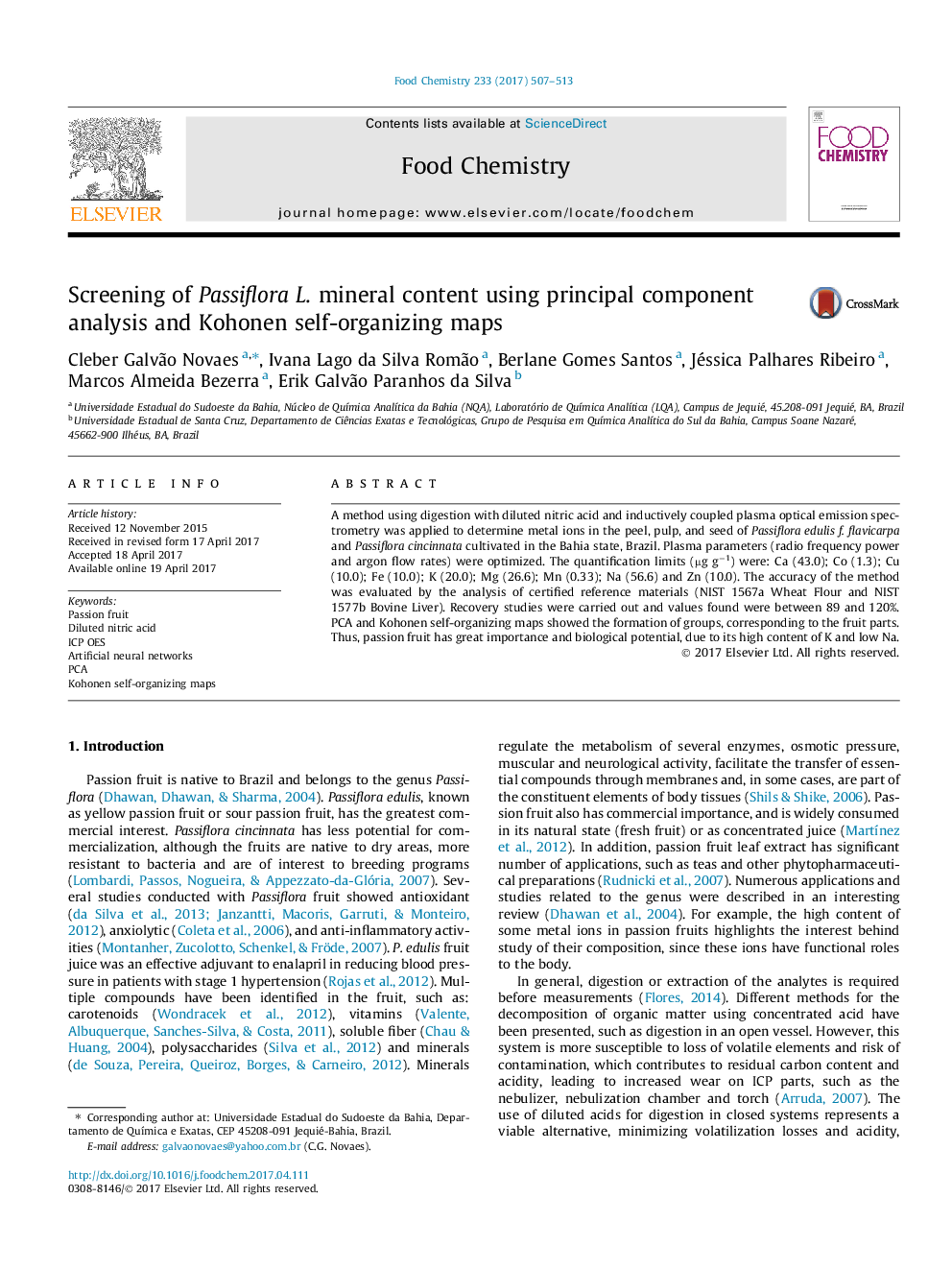| Article ID | Journal | Published Year | Pages | File Type |
|---|---|---|---|---|
| 5132850 | Food Chemistry | 2017 | 7 Pages |
â¢Digestion using dilute nitric acid in pressurized system is effective to digest tissues of Passiflora fruits.â¢The new method allowed the optimization of ICP parameters in more robust conditions.â¢PCA and ANN allowed identifying different chemical characteristics in Passiflora fruit.â¢Passion fruit is a food with great potential biological importance, especially because of its high content of K and low Na.
A method using digestion with diluted nitric acid and inductively coupled plasma optical emission spectrometry was applied to determine metal ions in the peel, pulp, and seed of Passiflora edulis f. flavicarpa and Passiflora cincinnata cultivated in the Bahia state, Brazil. Plasma parameters (radio frequency power and argon flow rates) were optimized. The quantification limits (µg gâ1) were: Ca (43.0); Co (1.3); Cu (10.0); Fe (10.0); K (20.0); Mg (26.6); Mn (0.33); Na (56.6) and Zn (10.0). The accuracy of the method was evaluated by the analysis of certified reference materials (NIST 1567a Wheat Flour and NIST 1577b Bovine Liver). Recovery studies were carried out and values found were between 89 and 120%. PCA and Kohonen self-organizing maps showed the formation of groups, corresponding to the fruit parts. Thus, passion fruit has great importance and biological potential, due to its high content of K and low Na.
